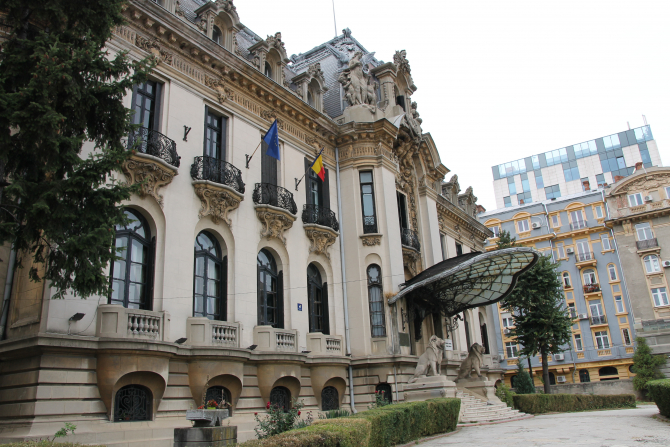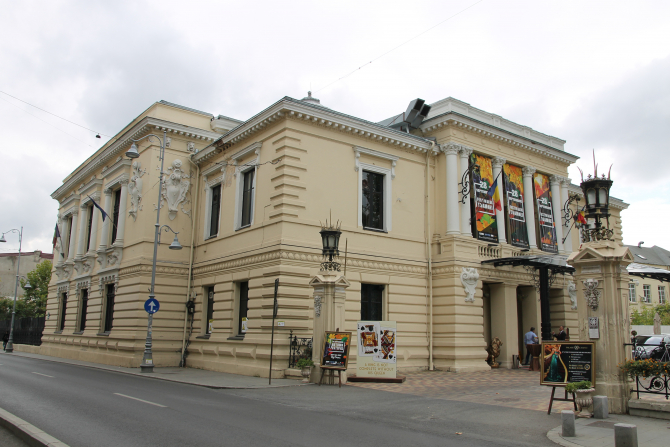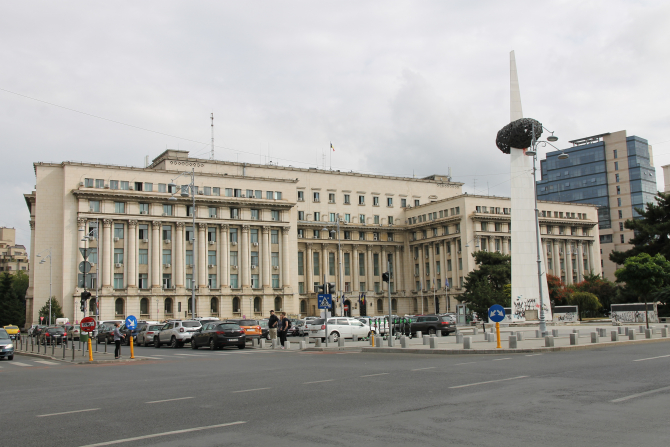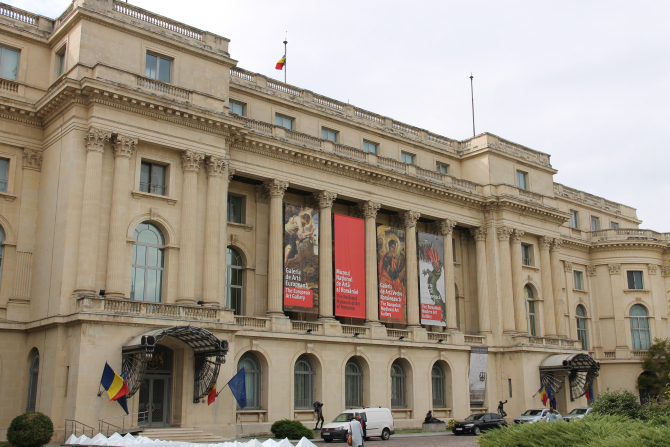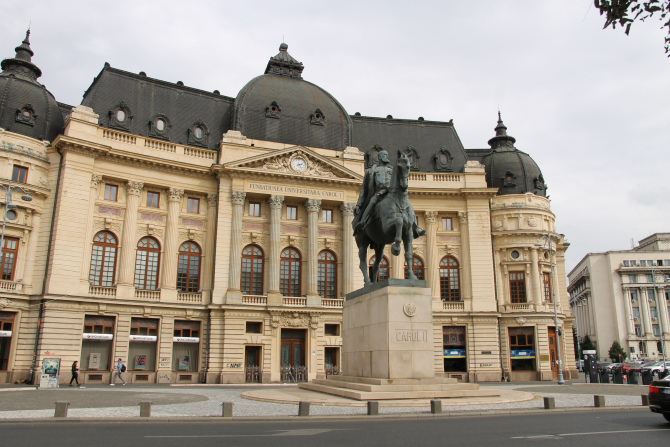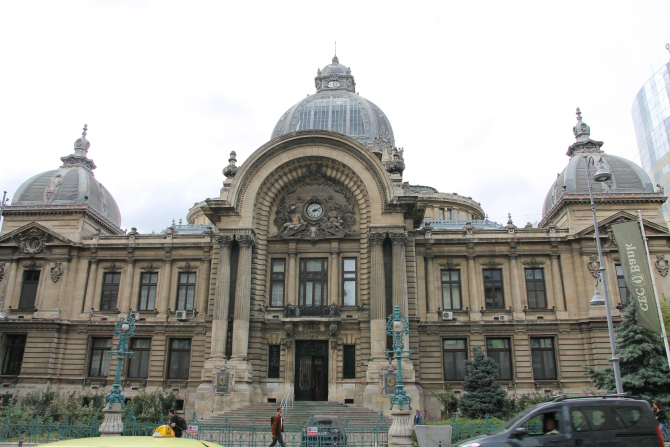
Calea Victoriei, on two wheels
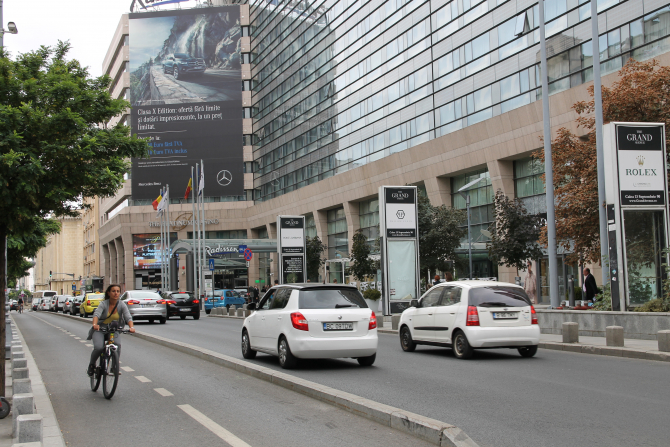
The best bike track in the Capital of Romania is on Calea Victoriei (Victory's Road). In addition, it is also the "richest" in history, sprinkled with monuments and places of relaxation or shopping.
From Victoriei Square, going to Splaiul Unirii, lovers of two-wheeled walking enjoy a true trip through the secular history of Bucharest, but also the bicycle lane with two senses, delimited by the road and the pedestrian sidewalk. The route Calea Victoriei - Regina Elisabeta Boulevard - Splaiul Indepenței has a length of 5.5 km and can be traveled in about 15 minutes by bicycle. Leaving behind the Victoria Palace (the Government building), the Antipa Museum, the Romanian Peasant Museum and the Museum of Geology - in their turn on the list of the most important sights to visit in Bucharest, we pedal towards the following points of attraction.
June 19, 1956, the date from which the George Enescu National Museum operates the Archive DC News
On the right side of the Victoria Road, at no. 141, we can admire the "George Enescu" National Museum. The museum bearing the name of the greatest Romanian composer is hosted by the Cantacuzino Palace, one of the most beautiful buildings in Bucharest. The palace was built following the projects of the architect Ioan D. Berindei, between 1901-1903, by Gheorghe Grigore Cantacuzino - "Nababul", former mayor of the Capital, prime minister, head of the Conservative Party. The building was decorated by the most appreciated artists of the time. The mural paintings are signed by the masters G. D. Mirea, Nicolae Vermont, Costin Petrescu and Arthur Verona, and the sculpted carvings and ornaments are the work of Emil Wilhelm Becker.
The palaces bordering the history-laden road
Going on, at no. 133, also on the right side, we can admire one of the famous casinos in Romania, Casa Vernescu - today Palace Casino. The building was raised around 1980, in the eclectic style that French architects managed to impose in several European countries at that time. Visiting, on the left side of the famous Bucharest road, you can admire the Ghica Palace (Grădișteanu-Ghica House), a true architectural wonder, built in 1834, following the plans of Jules Berthet, a French architect born in Switzerland, while the construction was done by the French architect Louis Blanc. Between 1895-1898, the building underwent transformations, being enriched with interior decorations of huge value.
Vernescu House, today hosting the Palace Casino, was built in 1820 by the boyfriend Filip Lenș, later bought in 1886 by Guță Vernescu. Architect Ion Mincu restored it between 1887-1889 in an eclectic style Archive DC News
As we head towards the Revolution Square (the former Palace Square) - a very important point in the center of Bucharest, we can still admire, on the right side of the road, the Știrbei Palace, an extremely important historical monument, with an impressive neoclassical architecture, having many greek elements. The palace was built around 1835, following the plans of the French architect Michel Sanjouand, at the command of the future ruler of the Romanian Country, Barbu Știrbei (1789-1869), at that time a great „lawyer of justice”. The building was used by Barbu Știrbei as a royal residence of protocol, between 1849-1856, gaining its fame through the numerous balls and parties of the elites of the time, which were organized here.
The place where the destiny of Romania has changed
Ministry of Internal Affairs - former Senate Palace and former headquarters of the Central Committee of the Romanian Communist Party Archive DC News
The most important area is the Revolution Square, bounded by the Royal Palace - which houses the National Art Museum of Romania. The square is considered the most important in the Romanian capital, being a landmark of the history of the city, but also of the national history, in the same time. It is a place full of cultural and historical values, being delimited by the most important tourist objectives: the Royal Palace, the Romanian Athenaeum, the University Central Library and the Ministry of Internal Affairs - the former Senate Palace and the headquarters of the Central Committee of the Romanian Communist Party (CC of PCR) from which the former communist dictator, Nicolae Ceaușescu, fled, by helicopter, after his last speech, in the baclcony of the imposing building, on December 21st, 1989. This historical moment, which practically triggered the 1989 revolution throughout Romania, also gave the current name of the square.
The Royal Palace, the symbol of the Romanian monarchy Archive DC News
The Royal Palace is the most important historical monument in the Romanian capital. The building initially symbolized the center of the monarchic power in Romania. The palace was built according to the plans of the architect Nicolae Nenciulescu, but it was finished in 1959, under the communist regime. The imposing building housed the official activities of the Royal Family of Romania, until August 24th, 1944, when it was bombed and remained unavailable until the exile of King Mihai.
After the forced abdication of King Mihai, on December 30th, 1947, the palace was repaired, and the architectural elements reminding of the monarchy were removed or hidden. Starting with 1953, part of the palace was transformed into a museum, and after few years, the entire building became the National Art Museum of Romania, which can be visited today, with the most important permanent or temporary exhibitions in Romania.
The equestrian statue of Carol I in front of the Royal Palace. In the back, the headquarters of the Central University Library Archive DC News
In 1965, the body of the dictator Gheorghe Gheorghiu-Dej was placed in the Palace, in order for the crowds to pay him the last homage. During the dictatorship of Nicolae Ceausescu, the Throne Hall was known as the "State Council Hall of the Socialist Republic of Romania", being used for some official events of the communist regime. Also during the communist period, the theater hall inside the Palace ("The Small Palace Hall") was opened to the public, as a cinema. During the 1989 Revolution, the Palace was affected by fire, and the works of art housed in the building were seriously endangered. After the Revolution, the Palace was restored in several stages.
„Dați un leu pentru Ateneu” - Donate one coin for the Athenaeum!
The building of the Romanian Athenaeum is an architectural monument, which combines the neoclassical style with the eclectic style, being raised between 1886 and 1888, following the plans of the French architect Albert Galleron. The Athenaeum was built in the Bishops' Garden, land belonging to the family of Văcărești, the history of the tourist objective starting from a colossal public collection, carried out under the slogan: "Dați un leu pentru Ateneu – Donate one coin for the Athenaeum". The Romanians then mobilized and made donations for the most representative concert hall in Bucharest, which today houses the headquarters of the "George Enescu" Philharmonic. The Athenaeum was inaugurated on February 14th, 1888, in an area that at that time was considered peripheral, then practically moved the city center, together with the Royal Palace and the other very important buildings in the Palace Square area - the current Revolution Square.
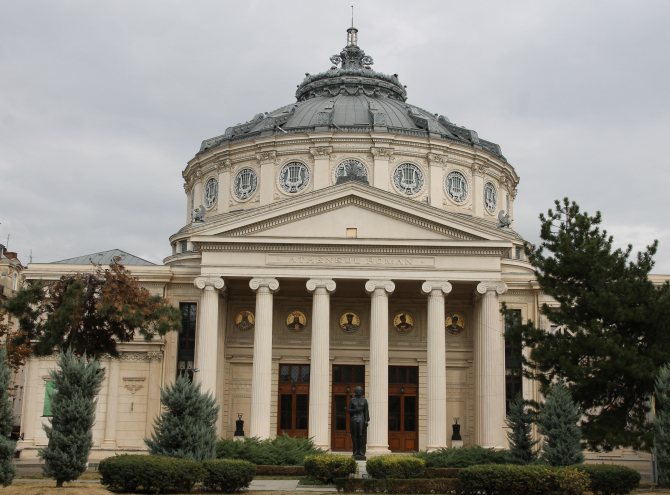
The Romanian Athenaeum Archive DC News
Initially, Calea Victoriei was not located in the central area of Bucharest, but on the outskirts, being called „Ulița Mare” (The big road), then the Mogoșoaiei Bridge, after it was being paved with wooden logs, in 1692. It was the connecting road between the city center and the Mogosoaia Palace. The area quickly became the most fashionable part of Bucharest, in 1775, when many Bohemian houses were already built here and the largest shops, restaurants, cafes and luxury confectioneries were opened. And today it is the famous area for those looking for luxury products, from furs, clothes or shoes, to perfumes and fashion jewelry brands.
The elites of yesterday and today
Also here are the most important hotels and restaurants in Bucharest, from the famous Athenee Palace (Hilton) or Radisson Blu (the former Bucharest Hotel), to Casa Capșa, Continental or Novotel, the road leading to one of the oldest stopping places in Bucharest: Manuc's Inn. In 1814, Calea Victoriei became the first street in Bucharest illuminated by candlelight with candles, and in 1878 it was renamed Calea Victoriei, following the victory in the independence war between 1877-1878. In the interwar period, it was the center of the worldly social and of the cultural or political elites of that time.
CEC Building DC News Archive
The bicycle route continues, beyond the Royal Palace, towards the old center, to the Unirii Square, and on both sides of the bicycle lane, going to Kilometer zero, the shops, cafes and hotels of today still retain much of the footprint of those that were here a century ago. The prestige of the place was maintained, facing the history and the several transformations of the city. The Victory's Road (Calea Victoriei) reveals the overlapping stages of the times and the memory of the people who have trodden them on foot, by bicycle or by car, in the last hundred years.
Fiți la curent cu ultimele noutăți. Urmăriți DCNews și pe Google News
Citește articolele cu aceleași etichete:

